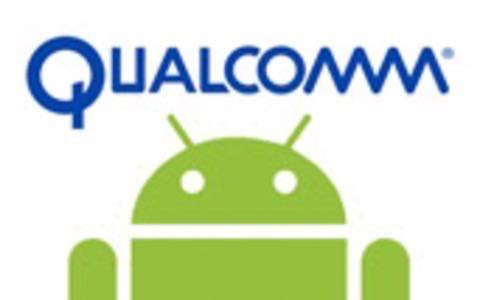This week in San Diego is Qualcomm’s Uplinq 2010 conference, which is focused on the business and technology behind mobile development. During the opening keynote, company CEO Paul Jacobs announced that Qualcomm would be releasing a free vison-based augmented reality (AR) software development kit (SDK) – potentially enabling developers to build the next generation of mobile AR apps.

Vision-Based vs. Sensor-Based
Jay Wright, Qualcomm’s Director of Business Development, introduced the features of the SDK during a session today at Uplinq. Qualcomm is setting its sites on the future of mobile AR applications, which it believes will center around vision-based tracking. Many applications thus far have used GPS, compass and accelerometer data to create AR views, but as Wright explains, the quality of the user experience is much lower than vison-based views.

Vison-based AR hasn’t taken off as fast as sensor-based AR because the technology is difficult to develop (partly due to a dearth of tools) and device hardware has lacked the necessary computing ability to handle it properly. With improved mobile processors the latter is becoming less of a burden, and Qualcomm hopes its SDK will take care of the former.
SDK Tools and Features
The SDK will launch this fall and will initially only support applications built for Android 2.1 and higher. To develop the apps, developers can use he SDK as a C++ library within the Android Toolchain as well as with the Unity 3D game development tool as an extension. Unity co-founder and CEO David Helgason showed off how to port an existing 3D game into a mobile AR game using Unity and the Qualcomm AR SDK, which seemed to be a relatively easy thing to accomplish.
Qualcomm is also providing a web-based tool for uploading images that can then be used as targets for image-based AR tracking. The service detects all of the trackable points on the image and automatically rates it from 0 to 5 stars based on how well it could potentially be tracked.

Some of the features of the SDK include the ability to track 2D planar surfaces, like standard markers or more sophisticated image markers. It also allows for what Qualcomm is calling “virtual buttons,” which allow users to interact with virtual 3D objects in real space. An example used to describe this feature was a “Whack-a-Mole” game where players could theoretically use their hands to smash virtual moles popping up on the AR view in their camera.
Game Studio & Developer Challenge
Also announced this week along with the SDK is the creation of the Augmented Reality Game Studio at Georgia Tech. The lab will be run by Blair MacIntyre, professor at the university’s College of Computing and director of its Augmented Environments Lab. In the lab, students will have the opportunity to experiment with both Qualcomm’s SDK and the Unity game development tool.
To encourage development with its SDK, Qualcomm is sponsoring an AR developer challenge that will award the creator of the most innovative application with $125k. Second and third place will also receive $50k and $25k respectively, and each will be invited to attend the Mobile World Congress in Barcelona, Spain next February where the winners will be announced.

The SDK is currently in private beta, and developers can apply to participate online. One of the first companies working with the SDK right now is toy manufacturer Mattel which demoed an AR version of its classic Rock’em Sock’em Robots game. This fall the SDK will move to an open beta, and the deadline for challenge submissions will be in January of 2011.
Why Just Android?
Android is a logical starting point for Qualcomm’s SDK. Vision-based augmented reality, as mentioned above, puts a unique stress on the processor (and the battery) since it is essentially the simultaneous combination of 3D gaming and video recording. Wright says the technology runs best Qualcomm’s Snapdragon processor – a chip with deep penetration in the Android market.
Wright did confirm that the SDK would be included in Qualcomm’s Brew mobile platform in the future, but fewer Snapdragon devices run Brew than Android.

Qualcomm is apparently attempting to use its augmented reality SDK as a selling point to boost the sales of devices carrying its processors. With that in mind, it would be unlikely to see Qualcomm provide an iOS version of its SDK since Apple uses its own chipsets. However, this does mean that the SDK could appear on other phones, including Palm, HTC, Samsung and RIM devices, in the future.
Disclosure: Qualcomm covered the author’s travel costs to attend Uplinq 2010.










